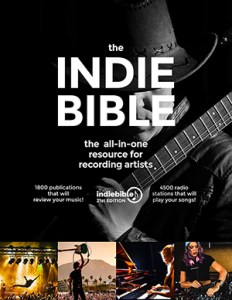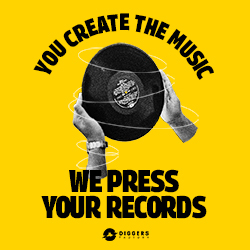Learning a new instrument is not an easy task. As anyone who has attempted to do so knows, it requires a lot of time and effort. It can be an incredibly complicated endeavor, involving many hours of practice, learning how to read music, understanding musical theory and plenty of new terms.
Most people who pick up an instrument to learn how to play it eventually put it back down, giving up before they can honestly say they know what they’re doing.
With that said, there are easier ways to begin this musical journey. For beginners who are just starting out in the world of music, there are several instruments that provide a slightly easier entry point. While these might not be the instruments you originally envisioned yourself playing, they can be a great starting point for those looking for an intro and who want to become a musician quickly.
So, if you’re looking for a way to get started on your musical journey, why not try one of these?
In This Article:
-
Acoustic Guitar
-
Keyboard
-
Harmonica
-
Electronic Drums
-
Handheld Percussion
1. Acoustic Guitar
If you’re looking for a musical instrument to learn, the acoustic guitar is an excellent choice. While it may be a bit more challenging than some other instruments, the guitar provides quicker rewards, and it remains one of the most useful and popular in the world.
Thankfully, learning chords and basic playing – called strumming – isn’t too difficult. After only a short time and a bit of practice, most people can actually play a song. This is exciting for anyone who is just getting started in the world of music, as being able to actually hear the fruits of one’s labor in a relatively short span of time feels wonderful.
Moreover, the acoustic guitar is a highly popular instrument for those who want to play solo and those who are interested in joining or forming a band. Also, acoustic guitars are easier to master than electric guitars, but they’re also the more affordable option.
The acoustic guitar teaches students a different form of musical notation–or it may be an entry point into this field for many. Check out our list of guitars the beatles played on for inspo!
If you’re interested in learning the guitar, it’s best to start with nylon strings as opposed to steel ones. The former are much easier on fingers that aren’t used to playing, while the latter will create calluses.
Do you have a new album or EP coming out? Let us help your new album blast off with worldclass music promotion from Planetary.
2. Keyboard
Learning to play the keyboard is a challenging but is one of the most rewarding pursuits for aspiring musicians. While it may not be the easiest instrument to master–just like the acoustic guitar just above–it is well worth the effort. Similar to the guitar, the keyboard provides quick rewards for the student’s efforts, which is important to many young people and those who may feel discouraged quickly.
Learning to play the keyboard is an excellent way to build a solid foundation in music theory. It teaches a person to read sheet music, identify chords, understand harmonies, and even play by ear, which many count as the real mark of not just someone who can play, but a serious musician. Learning the keyboard helps a person develop hand-eye coordination and makes it easier to learn other instruments.
Keyboards are easy to obtain and relatively inexpensive. Learning to play the keyboard opens up many possibilities, including playing the piano sometime down the line and even using digital music software. Most popular DAWs support the use of MIDI controllers, which can be connected to keyboards in many instances. Hooking up your new keyboard to your DIY recording studio will give you lots of options to play with!
Additionally, there is an abundance of free piano tutorials, sheet music, and other resources available online for those who want to learn, so paying for lessons is not a necessity like it once was.
3. Harmonica

While it may not be as ubiquitous as the keyboard or guitar, the humble harmonica should not be counted out.
Unlike many other instruments, the harmonica is played only with one’s breath. Anyone can create beautiful melodies with just a few simple techniques. Players need to take a breath and then let it out into the instrument, which vibrates a metal tine. Then, it’s just about learning how to channel that air into the right hole in the harmonica itself, which determines the sound that will come out. Although it may take some time to get the hang of playing by feel, the basic principles can be learned in just a few hours.
One of the most appealing aspects of the harmonica is that it’s really difficult to get it wrong, making it a great starter instrument! Even beginners can create some sort of melody with just a little practice, and it’s much easier to focus on playing one note at a time than multiple ones at once, which is the case with the guitar and the keyboard.
While the harmonica was once almost exclusively connected with only blues and other similar genres, that’s no longer the case, and it’s now heard in all kinds of music. And even if it’s an acquired taste for some, learning to play the harmonica will give any beginner at least a basic understanding of how wind instruments work, opening up opportunities for exploring other options later on.
Have some new music coming out? You’re going to need to promote your new album to share it with the world.
4. Electronic Drums
Electronic drums offer a lot of versatility when it comes to sound options and recording, but not many people think of them when it comes time to pick a starter instrument.
These days, many popular options can be connected to computers and other devices, allowing for easy recording and integration with other music production software, such as DAWs.
Another benefit of electronic drums is the ability to play with headphones, making it easier to practice without disturbing others around you. That makes them markedly different from regular drums, which are notoriously noisy and despised by many parents, siblings, and neighbors.
Electronic drums also come with a variety of built-in sounds and drum kits, which can be customized to suit your musical preferences. This can be a fun way to experiment with different drum sounds and styles and even learn how to write full songs.
5. Handheld Percussion
Handheld percussion instruments…what are they?
Popular examples of handheld percussion instruments include cowbells, maracas, shakers, sleigh bells, tambourines, and triangles, to name just a few.
These instruments are versatile and can be played in bands, orchestras, and other musical groups to add depth and texture to the sound. And because they are easy to play and don’t require any formal training, or even any real understanding of notes, notation, or music theory, anyone can pick them up and start playing along with their favorite music.
Plus, they are small and portable, making them perfect for taking on the go or playing with groups at parties or in drum circles around the fire!




